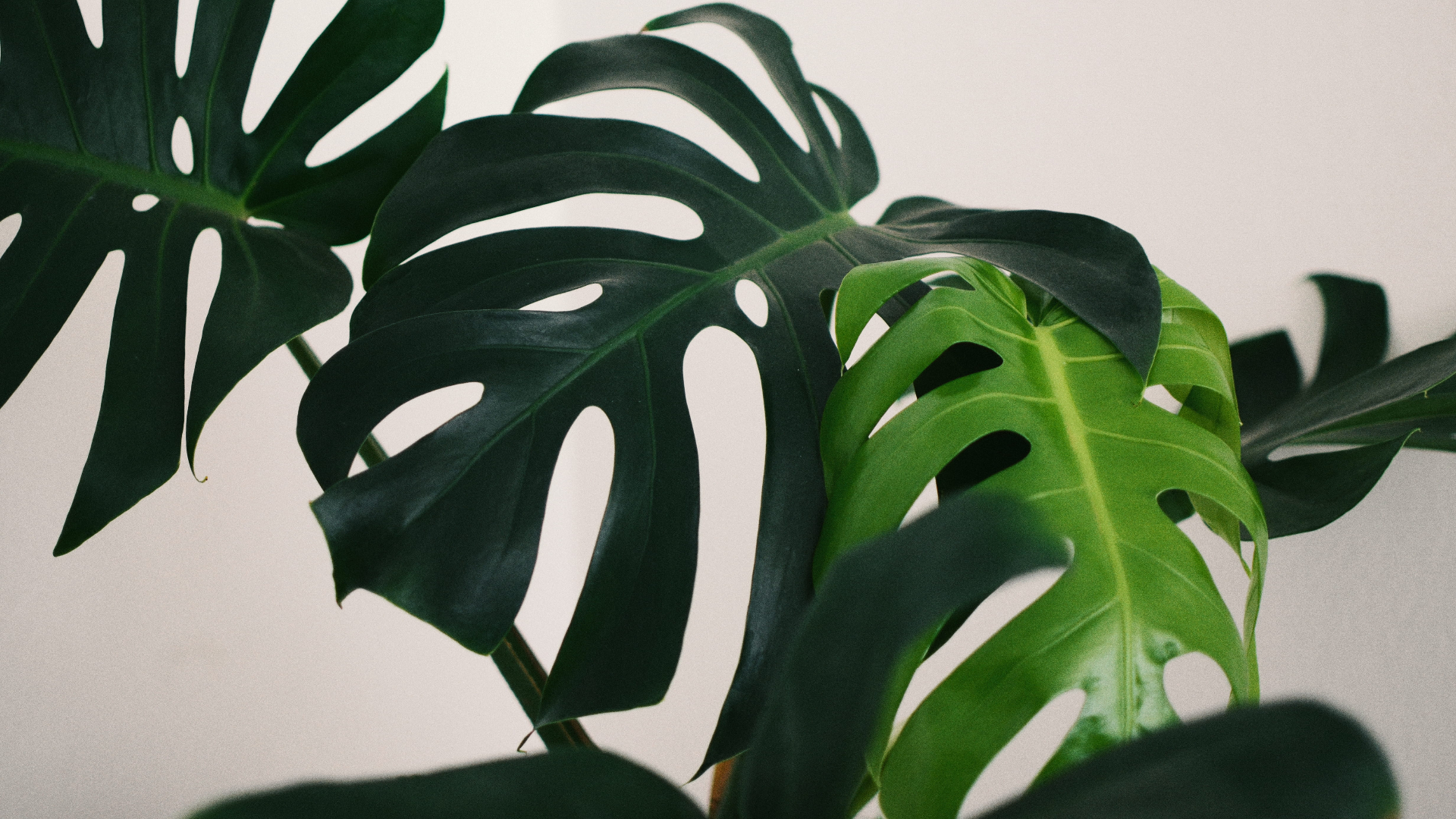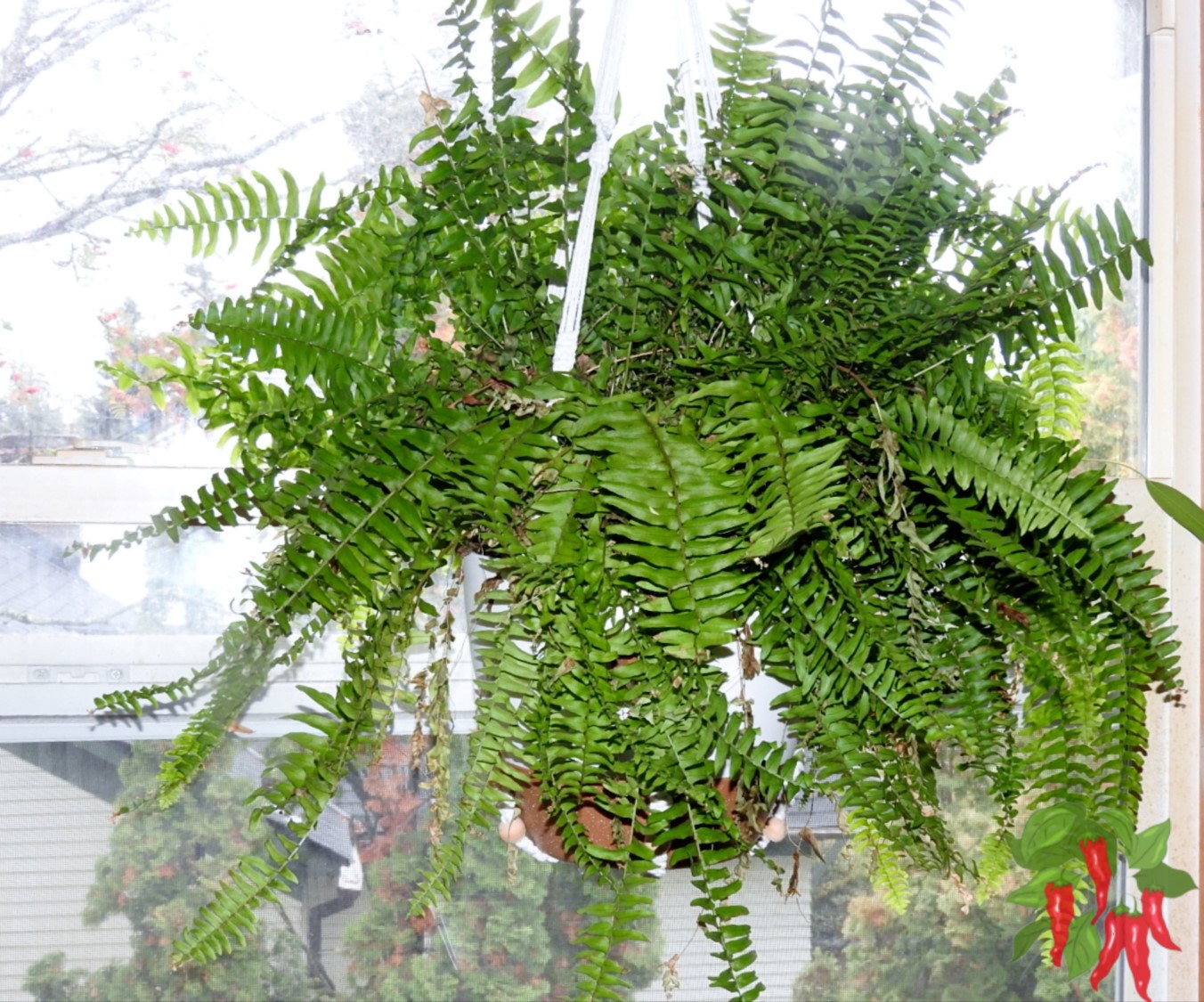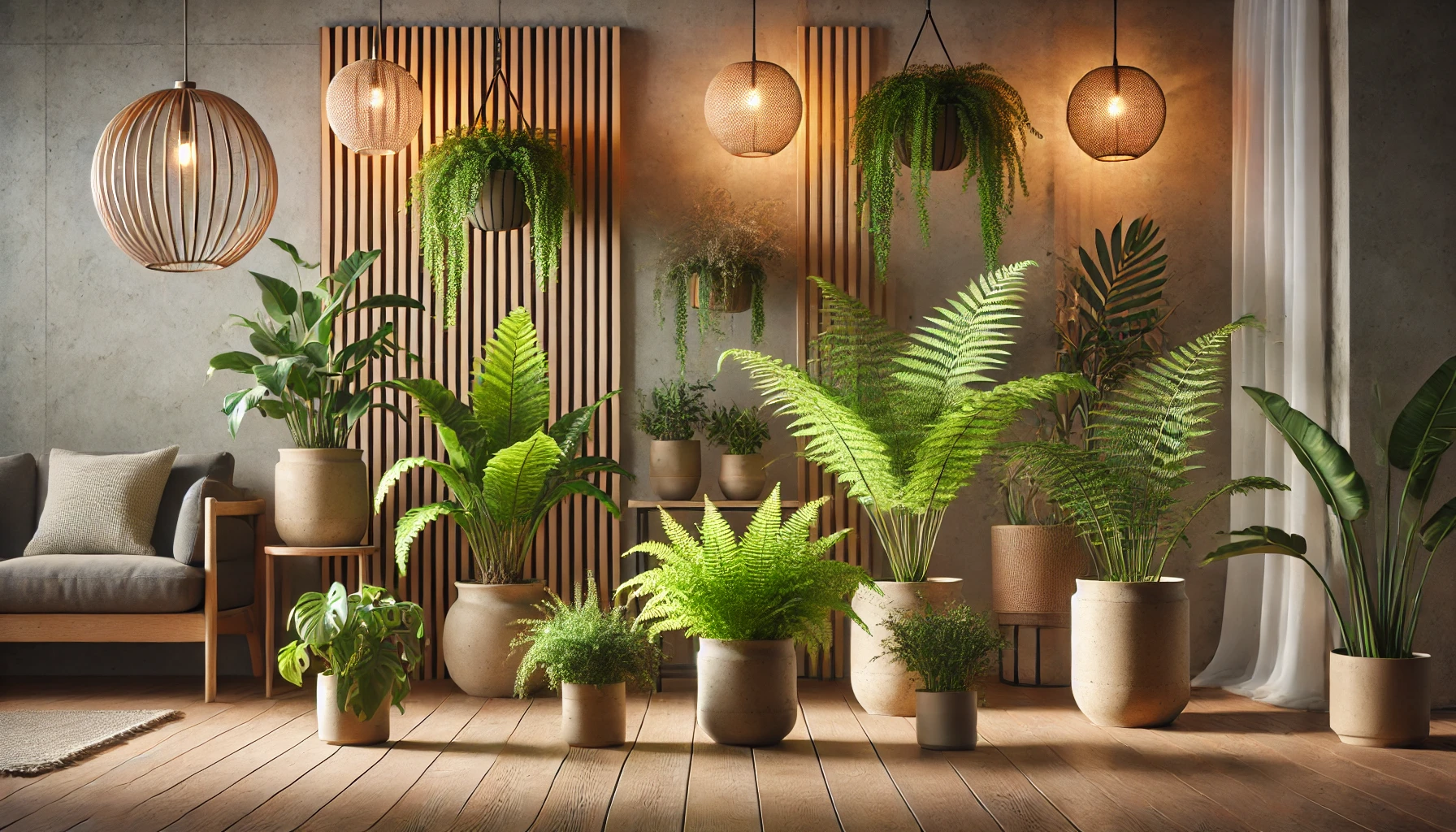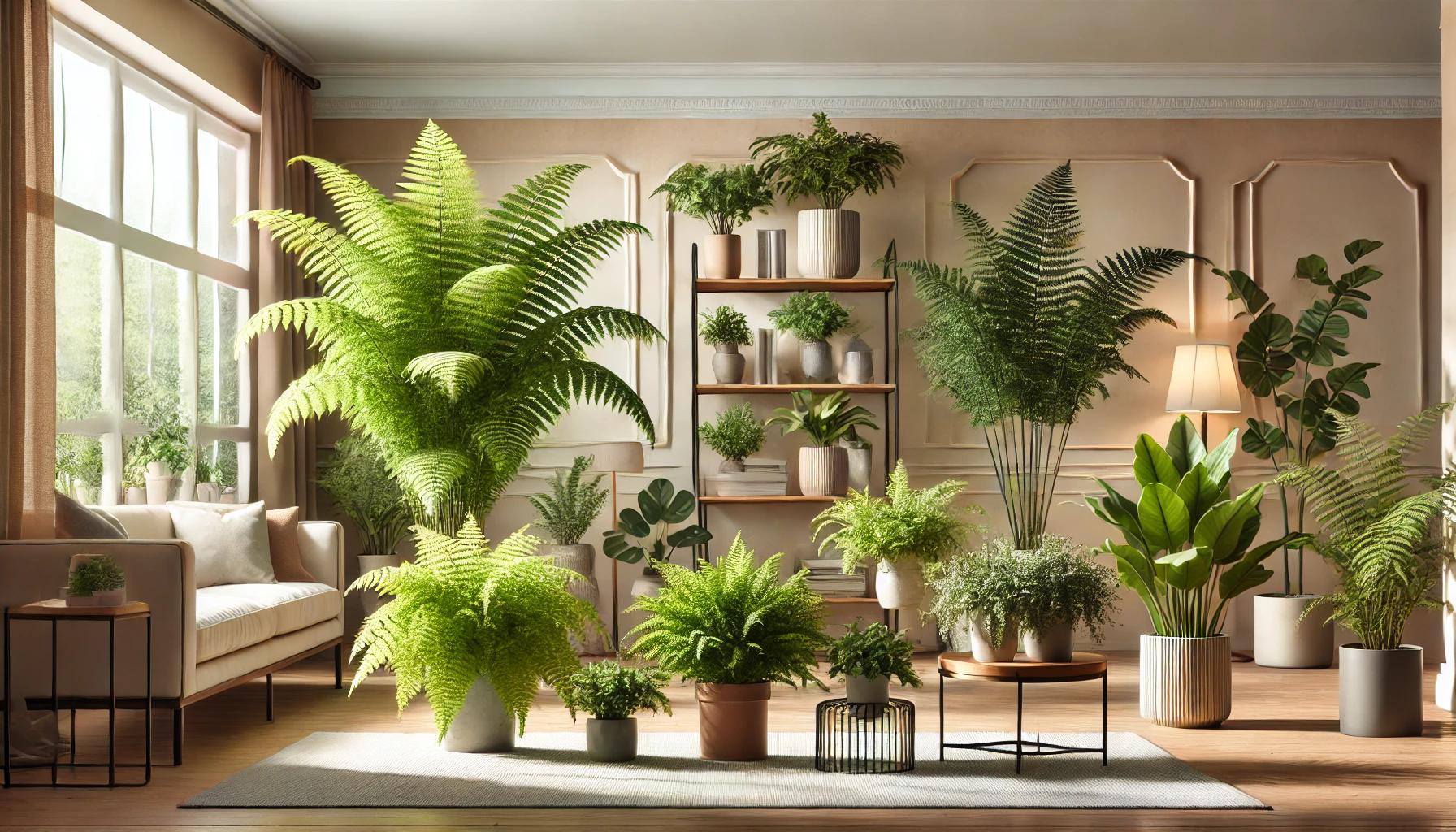This post contains affiliate links. If you buy something from one of our links we may earn a commission. Thanks

Discover the Best Indirect Sunlight Plants! Transform those shady spots into a lush indoor jungle. No green thumb? No problem! Let’s get growing! 🌿
1. Best Indirect Sunlight Plants Introduction
Hey there, plant lovers and soon-to-be green thumbs! Are you itching to fill your home with lush, leafy goodness but worried about those pesky dark corners?
Well, I’ve got some fantastic news for you – there’s a whole world of beautiful plants that absolutely thrive in indirect light.
Whether you’re a seasoned plant parent or just dipping your toes into the world of indoor gardening, this guide is your ticket to creating a jungle paradise, no matter how shy the sun is in your space.
Think about it – not every plant in nature basks in full, direct sunlight. Many of our leafy friends have evolved to thrive in the dappled light of forest floors or the shelter of larger plants.
And that’s great news for those of us with less-than-ideal lighting situations at home!
In this guide, we’re going to explore a diverse array of stunning indirect sunlight plants.
From the dramatic leaves of philodendrons to the cascading vines of pothos and from the delicate flowers of peace lilies to the waxy charms of hoyas – we’ve got something for every taste and every space.
So, grab a cup of your favorite beverage, get comfy, and let’s dive into the wonderful world of indirect light plants!
2. Best Indirect Sunlight Plants: Plant Categories
Alright, plant lovers, it’s time to dive into the good stuff! We’re about to embark on a green adventure through the diverse world of indirect light plants.
From leafy giants to compact cuties, we’ve got a plant for every personality and space.
Whether you’re into dramatic foliage, trailing vines, or blooming beauties, there’s a perfect plant waiting to become your new leafy BFF. So, grab your virtual explorer’s hat, and let’s start our journey through these fabulous plant categories!
2.1 Philodendrons & Monsteras
Let’s kick things off with the superstars of the indirect light world – Philodendrons and Monsteras. These plants are like the cool kids of the plant world, and for good reason! They’re easy to care for, fast-growing, and boy, do they make a statement.
First up, we’ve got the Philodendron Birkin. This beauty is like the zebra of the plant world, with its dark green leaves streaked with white pinstripes.
It’s a relatively new hybrid that’s taken the plant world by storm, and trust me, once you see one, you’ll understand why.
Now, if you’re looking for a plant that’s as extra as you are (no judgment here!), allow me to introduce you to the Pink Princess Philodendron. With its dark green leaves splashed with vibrant pink variegation, this plant is the definition of plant glamour. Fair warning, though: she knows she’s gorgeous and can be a bit of a diva when it comes to care.
Moving on to the Monsteras – you’ve probably seen these all over Instagram, and there’s a good reason for that.
The Monstera Deliciosa, also known as the Swiss Cheese Plant, is famous for its large, split leaves that can add instant tropical vibes to any room. It’s like having a piece of the jungle right in your living room!
For those of you working with smaller spaces, don’t worry, I’ve got you covered too. Meet the Rhaphidophora Tetrasperma, affectionately known as the Mini Monstera.
Despite its nickname, it’s not actually a Monstera, but it has similar split leaves in a more compact form. It’s perfect for adding that tropical touch without overwhelming your space.
Last but certainly not least in our Philodendron lineup is the Philodendron micans. This vining plant has heart-shaped leaves with a velvety texture and a gorgeous iridescent sheen.
In the right light, its leaves shimmer with hues of reddish-brown, green, and purple. It’s like the mood ring of the plant world!
All these plants are perfect for those spots in your home that get bright, indirect light.
They’ll tolerate lower light conditions, but they’ll really thrive and show off their best colors and patterns when they get plenty of indirect light.
2.2 Pothos & Vines
Alright, plant pals, let’s talk about the kings and queens of the hanging basket world – Pothos and other vining plants! If you’re looking to add some draping greenery to your space, these are your go-to guys.
First up, we’ve got the Golden Pothos (Epipremnum aureum). This plant is like the golden retriever of the plant world – friendly, easy-going, and practically indestructible.
How To Care for Golden Pothos: Easy Care Plant for Beginners
Its heart-shaped leaves come in a beautiful mix of green and yellow, bringing a sunny touch to any room. And the best part? It’s super forgiving if you forget to water it now and then. We’ve all been there, right?
If you’re after something a little fancier, check out the Marble Queen Pothos. This variety sports gorgeous green and white variegated leaves that look like they’ve been hand-painted. It’s a slower grower than its golden cousin, but trust me, it’s worth the wait.
Now, for those of you who like your plants with a bit of texture, let me introduce you to the Satin Pothos (Scindapsus pictus). Despite its name, it’s not actually a pothos, but it has a similar growth habit. Its leaves have a silvery, almost metallic sheen that catches the light beautifully. It’s like jewelry for your plant shelf!
Last but not least in our vining lineup is the String of Hearts (Ceropegia woodii). This plant is for all you hopeless romantics out there.
It has delicate, heart-shaped leaves on thin, cascading vines. In the right conditions, it can grow super long – perfect for draping over bookshelves or hanging from macramé plant hangers.
All these vining plants are perfect for those spots in your home that get bright, indirect light.
They’re also great for adding some greenery to those tricky spots like the top of a bookshelf or a bare corner.
Plus, they’re super easy to propagate, so you can share the plant love with your friends!
2.3 Flowering Plants
Now, I know what some of you might be thinking – “But I want flowers! Can I have flowers in indirect light?” Well, my flower-loving friends, have I got news for you! There are indeed some stunning flowering plants that thrive in indirect light.
Let’s start with the show-stopper – the Anthurium. These plants are like the flamingos of the plant world, with their bright, waxy flowers that come in shades of red, pink, white, and even purple.
But here’s a fun fact: what we think of as the flower is actually a modified leaf called a spathe. The real flowers are tiny and grow on the spadix (that’s the spike in the center of the spathe). Cool, right?
Next up is the Peace Lily (Spathiphyllum). This plant is like the strong, silent type of the plant world. It has glossy green leaves and produces elegant white flowers. But don’t let its calm demeanor fool you – the Peace Lily is also an air-purifying powerhouse. NASA even included it in their Clean Air Study!
For those who like their Peace Lilies with a twist, check out the Sweet Pablo Peace Lily. This variety has beautiful variegated leaves with creamy white streaks. It’s like the Peace Lily put on its fancy clothes!
Now, here’s the deal with flowering plants in indirect light: they might not bloom as prolifically as they would in brighter conditions.
But with proper care (and maybe a little sweet-talking), you can still enjoy beautiful blooms. Plus, even when they’re not flowering, these plants have gorgeous foliage that looks great year-round.
Remember, the key to keeping these flowering beauties happy is to find that sweet spot of bright, indirect light.
A north or east-facing window is usually perfect. And don’t forget to dust their leaves occasionally – it helps them photosynthesize better and keeps them looking their best.
2.4 Hoya Collection
Alright, plant enthusiasts, it’s time to talk about one of the most diverse and fascinating groups of indirect light plants out there – Hoyas!
Often called wax plants, these beauties are known for their thick, waxy leaves and stunning clusters of star-shaped flowers. They’re like the hidden gems of the plant world, and once you start collecting them, it’s hard to stop!
Let’s kick things off with the Hoya kerrii, also known as the Sweetheart Hoya. This little cutie is famous for its heart-shaped leaves. It’s often sold as a single leaf planted in a small pot, making it a popular gift for Valentine’s Day.
But here’s a fun fact: if you want your Sweetheart Hoya to grow into a full plant, make sure you’re getting one with a stem and node, not just a single leaf!
Next up is the Hoya carnosa, the classic wax plant. This is probably what most people think of when they hear “Hoya.”
It has thick, oval leaves and produces clusters of star-shaped flowers that look like they’re made of porcelain. The flowers even have a sweet scent, especially at night. It’s like having your own personal air freshener!
For those of you who like a bit of color in your life, check out the Hoya crimson princess. This variety has beautiful variegated leaves with splashes of pink, white, and green.
When it blooms, it produces clusters of pink flowers with dark centers. It’s like a little fireworks display right in your living room!
Now, here’s the thing about Hoyas – they can be a bit slow to grow, and they might take their sweet time before they start blooming.
But trust me, it’s worth the wait. There’s nothing quite like seeing a Hoya in full bloom for the first time. It’s like a reward for all your patient care!
2.5 Ferns & Palms
Ready to bring a touch of the tropics into your home? Let’s dive into the world of ferns and palms! These plants can transform any corner of your house into a lush, green oasis. And the best part? Many of them thrive in indirect light!
 First on our list is the Bird’s Nest Fern. With its wide, rippled fronds growing in a circular pattern, it really does look like a bird’s nest.
First on our list is the Bird’s Nest Fern. With its wide, rippled fronds growing in a circular pattern, it really does look like a bird’s nest.
This fern is perfect for adding some texture to your plant collection. Plus, it’s relatively easy to care for, making it a great choice for fern newbies.
 Next, we have the classic Boston Fern. This is the fern you probably picture when someone says “fern” – all lacy and feathery with arching fronds.
Next, we have the classic Boston Fern. This is the fern you probably picture when someone says “fern” – all lacy and feathery with arching fronds.
It’s great for hanging baskets or placing on a pedestal where its fronds can cascade down. Just a heads up – this one likes its humidity, so it might appreciate a little misting now and then.
Moving on to palms, let’s talk about the Cat Palm. Despite its name, it’s not actually related to catnip, so your feline friends should leave it alone.
This palm has a bushy, compact growth habit, making it perfect for smaller spaces. It’s like having a little piece of a tropical beach right in your living room!
Last but not least, we have the Majesty Palm. This one’s for those of you who have some space to spare and want to make a big statement.
With its long, feathery fronds, it can grow quite tall over time, becoming a true focal point in any room.
Just remember, with great majesty comes great responsibility – this palm needs consistent care to truly thrive.
Now, here’s a pro tip for all you fern and palm enthusiasts: these plants love humidity. If you notice the tips of the fronds turning brown, it might be a sign that the air is too dry.
Try placing a humidifier nearby or setting up a pebble tray with water under the plant. Your ferns and palms will thank you by staying lush and green!
Remember, while these plants love bright, indirect light, they can be sensitive to direct sunlight, which can scorch their leaves. An east-facing window or a spot a few feet away from a south or west-facing window is usually perfect.
2.6 Ornamental Foliage
Alright, plant lovers, it’s time to talk about the real divas of the plant world – ornamental foliage plants!
These beauties are all about showing off their stunning leaves, and boy, do they know how to make an entrance. Who needs flowers when you’ve got leaves like these, right?
Let’s start with the Calathea family. These plants are like the runway models of the plant world – each one more striking than the last.
The Calathea Network (Calathea Musaica), for instance, has intricately patterned leaves that look like a master artist has painted them.
Then there’s the Calathea Triostar, with its leaves sporting a lovely pink hue that’s sure to brighten up any room.
And let’s not forget the Calathea Dottie, with its dramatic dark leaves accented with hot pink streaks. Talk about plant goals!
Next up, we’ve got the Begonia Maculata, also known as the Polka Dot Begonia. This plant looks like it’s straight out of a fairy tale, with its dark green leaves covered in silvery-white polka dots and red undersides. It’s like nature’s own confetti!
For those of you who like your plants with a bit of bling, check out the Chinese Money Plant (Pilea peperomioides). Its round, coin-shaped leaves on long stems give it a unique, almost sculptural appearance. Plus, it’s super easy to propagate, so you can spread the wealth (pun totally intended) with your friends.
Last but definitely not least in our ornamental lineup is the Dieffenbachia. This plant, also known as Dumb Cane (not the nicest nickname, I know), has large, tropical-looking leaves often variegated with creamy white or yellow patterns. It’s like having a piece of the tropics right in your living room!
Now, here’s the thing about these ornamental beauties – they can be a bit particular about their care.
Many of them, especially Calatheas, like high humidity and consistent moisture. But don’t let that scare you off!
With a little extra TLC, these plants will reward you with some of the most stunning foliage you’ve ever seen.
2.7 Peperomias
Next up, let’s chat about a group of plants that are perfect for those of you who might be short on space but big on style – Peperomias!
These compact cuties are like the bonsai of the indirect light plant world. They stay relatively small but pack a big punch when it comes to interesting foliage.
First on our Peperomia tour is the Watermelon Peperomia. One look at its leaves and you’ll see how it got its name – they’re marked with silvery bands that look just like the pattern on a watermelon rind. It’s like having a mini watermelon patch that you never have to harvest!
Next, we’ve got the Peperomia obtusifolia, also known as the Baby Rubber Plant. Don’t let the name fool you – it’s not related to rubber plants at all.
This little guy has thick, glossy leaves that come in green or variegated varieties. It’s super low-maintenance, making it perfect for busy plant parents or beginners.
 For those of you who like your plants with a bit of a blush, check out the Peperomia rosso.
For those of you who like your plants with a bit of a blush, check out the Peperomia rosso.
This variety has dark green leaves with reddish-purple undersides, giving it a warm, rosy glow. It’s like the plant equivalent of mood lighting!
 Last but not least, we have the Peperomia hope. This trailing variety has tiny, succulent-like leaves that cascade down as it grows. It’s perfect for hanging baskets or for adding a delicate, trailing element to your plant shelves.
Last but not least, we have the Peperomia hope. This trailing variety has tiny, succulent-like leaves that cascade down as it grows. It’s perfect for hanging baskets or for adding a delicate, trailing element to your plant shelves.
One of the best things about Peperomias is that they’re generally pretty easy-going when it comes to care.
They don’t need a ton of water (their succulent-like leaves store water), and they’re happy in normal room humidity.
Plus, their compact size makes them perfect for small spaces like desks, shelves, or even terrariums.
Here’s a pro tip for Peperomia care: be careful not to overwater them. These plants are prone to root rot if their soil stays too wet.
It’s better to err on the side of underwatering – wait until the top inch or two of soil is dry before giving them a drink.
2.8 Other Bright Indirect Light Plants
Alright, plant enthusiasts, we’re in the home stretch now! Let’s talk about some other fantastic plants that thrive in bright, indirect light.
These green friends might not fit neatly into our previous categories, but they’re definitely worthy of a spot in your indoor jungle.
First up, let’s chat about the Coffee Plant (Arabica). Yes, you read that right – you can grow your own coffee plant indoors!
While you probably won’t be harvesting enough beans for your morning cup of joe, these plants have beautiful, glossy green leaves that can add a touch of the exotic to your space. Plus, it’s a great conversation starter!
Next, we have the ever-popular Spider Plant. These hardy plants are like the gift that keeps on giving.
They produce long, arching leaves and send out “babies” or “spiderettes” that dangle down on long stems. They come in several varieties, including the curly Bonnie, the Ocean with its blue-green hues, and the classic Variegated with its white stripes.
Spider plants are super easy to propagate, so you can easily share the plant love with friends and family.
Spider plants are super easy to propagate, so you can easily share the plant love with friends and family.
For those of you who like a pop of color, consider the Bromeliad family. Varieties like Neoregelia and Guzmania can add a tropical flair to your space with their bright, long-lasting blooms.
And here’s a fun fact: most bromeliads only bloom once in their lifetime, but the bloom can last for months!
Last but not least, let’s talk about the Dwarf Fiddle Leaf Fig. We all know how popular the regular Fiddle Leaf Fig has become, but they can get huge!
The dwarf variety gives you those same iconic, violin-shaped leaves in a more manageable size. It’s perfect for adding a touch of that trendy Fiddle Leaf look without overwhelming your space.
3. General Care Tips
Now that we’ve introduced you to a whole world of indirect light-loving plants, let’s talk about how to keep them happy and thriving. Don’t worry, it’s not rocket science – with a few key tips, you’ll be a plant care pro in no time!
3.1 Light Requirements
First things first – let’s chat about light. When we say “indirect light,” what do we mean exactly?
Think of it as bright but filtered light. A good rule of thumb is that if you can read a book comfortably without turning on a lamp, that’s probably good indirect light.
Most of the plants we’ve discussed love bright, indirect light. An east-facing window is often perfect, as it provides gentle morning sun.
North-facing windows can work too, especially for plants that tolerate lower light. For south or west-facing windows, just move your plants a few feet back from the window or use a sheer curtain to filter the intense afternoon sun.
Remember, even plants that tolerate low light will often grow better and show more vibrant colors in brighter indirect light.
Just keep an eye out for signs of too much light (like scorched leaves) or too little (like long, leggy growth reaching for the light).
3.2 Soil and Watering
When it comes to soil, most of our indirect light-loving friends prefer a well-draining potting mix.
You can usually use a standard indoor potting soil, but for plants that like things on the drier side (like ZZ plants or some succulents), you might want to mix in some perlite or sand for extra drainage.
Watering can be tricky – it’s probably the number one cause of plant problems for beginners. The key is to water deeply but less frequently.
Wait until the top inch or two of soil feels dry before watering again. And always make sure your pots have drainage holes!
Different plants have different watering needs, so it’s a good idea to research each of your plant babies individually.
But in general, it’s better to underwater than overwater. Most plants can bounce back from being a bit too dry, but root rot from overwatering can be a death sentence.
3.3 Temperature and Humidity
Good news – most indoor plants are happy with the same temperatures we are! Aim for somewhere between 60-75°F (15-24°C).
Just keep them away from cold drafts or heat sources like radiators or air conditioning vents.
Humidity can be a bit trickier, especially for tropical plants like ferns and calatheas. If you notice crispy leaf edges, it might be a sign that the air is too dry.
You can increase humidity by grouping plants together, using a pebble tray filled with water, or investing in a humidifier.
3.4 Ongoing Maintenance
Regular maintenance will keep your plants looking their best. This includes:
1. Pruning: Trim off any dead or yellowing leaves to keep your plant looking fresh and encourage new growth.
2. Cleaning: Dust can accumulate on leaves, blocking light and making it harder for the plant to photosynthesize. Gently wipe leaves with a damp cloth every few weeks.
3. Fertilizing: Most plants benefit from fertilizer during their growing season (usually spring and summer). Use a balanced, water-soluble fertilizer and follow the package instructions.
4. Repotting: As your plants grow, they might need larger pots. Signs it’s time to repot include roots growing out of drainage holes or the plant drying out very quickly after watering.
Remember, every plant is unique, and it might take some trial and error to find what works best in your space. Don’t be discouraged if you have a few missteps – even experienced plant parents make mistakes sometimes!
4. Best Indirect Sunlight Plants: Conclusion
A Green Journey Completed
And there you have it, plant enthusiasts – your ultimate guide to the wonderful world of indirect sunlight plants!
We’ve journeyed through lush philodendrons, trailing pothos, elegant flowering plants, waxy hoyas, tropical ferns and palms, stunning ornamental foliage, compact peperomias, and so much more.
Who knew there were so many gorgeous green friends just waiting to brighten up those shadier spots in your home?
More Than Just Pretty Leaves
Remember, creating your indoor jungle is not just about beautifying your space (although these plants certainly do that!).
It’s about bringing a piece of nature indoors, improving your air quality, and even boosting your mood and productivity.
Each plant you nurture is like a little green companion, growing and thriving right alongside you.
Embrace Your Inner Plant Parent
Don’t be intimidated if you’re new to this whole plant parent thing. Every expert gardener started as a beginner, and every thriving plant collection started with just one plant. The key is to start small, learn as you go, and most importantly, have fun with it!
Finding Your Plant Soulmate
Maybe you’ll fall in love with the dramatic leaves of a Monstera, or perhaps the delicate flowers of a Peace Lily will steal your heart.
You might become obsessed with collecting every Peperomia variety you can find, or you could decide to transform your living room into a fern-filled forest paradise. The possibilities are endless!
The Secret to Plant Success
And here’s a little secret – talking to your plants isn’t crazy at all. In fact, it’s encouraged! It helps you notice small changes in their appearance and catch any potential issues early. Plus, who doesn’t love a little encouragement now and then?
Your Green Adventure Awaits
So, what are you waiting for? Armed with this guide and your newfound plant knowledge, it’s time to get out there and start greening up your space!
Visit your local nursery, join some plant-lover groups online, and start your journey into the rewarding world of indoor gardening.
Remember, every thriving plant jungle starts with a single leaf. Your perfect indirect light plant is out there waiting for you. Happy planting, and may your thumbs always be green!
Join the Plant Parent Community
P.S. Don’t forget to share your plant parent journey with us! We’d love to see how you’ve transformed your space with these indirect light-loving beauties. After all, the only thing better than being a plant parent is being part of a community of plant parents. Here’s to growing together!
Read more: https://heavenlyhouseplants.com/best-direct-sunlight-plants/
Learn more:
Feng Shui Plants: 47 Best Feng Shui Plants for Home
Creative Ideas for Decorating Dim Corners and North Facing Spaces
🌤️ Best Indirect Sunlight Plants
Looking for houseplants that thrive without direct sun? Explore these guides on the best plants and care tips for low to medium light spaces!
- 🌿 Best Indirect Sunlight Plants (Pillar Guide)
- 🌱 Dracaena Golden Heart Care
- 🍃 Begonia Maculata Care
- 🌸 How to Grow Hoya Krimson Queen
- 🪴 Caring for Shade-Loving Plants
- 🔍 How to Identify Plants that Thrive in Indirect Sunlight
- 🐍 Rattlesnake Plant Care
- 🌿 How to Care for Monstera
- 💛 How to Care for Golden Pothos
- 🎨 How to Care for Calathea
- 🌱 How to Care for Dieffenbachia
- ✌️ How to Care for Peace Lily
- 🖤 How to Care for ZZ Plant
- 🪟 Container Gardening for Limited Light
- 💡 Decorating Dim Corners & North-Facing Spaces
- 🌼 How to Grow Peperomia
- See all articles in our Indirect Sunlight Plants category
Related Content
Visit my Amazon Influencer Page for videos and gardening products Grow Your Own Garden



































